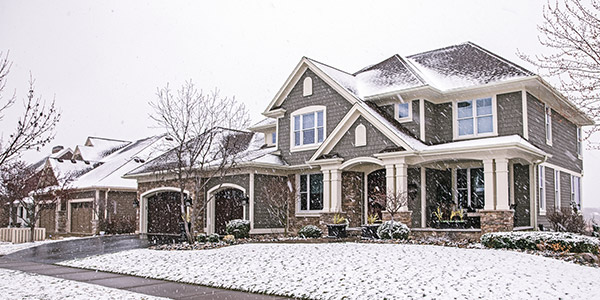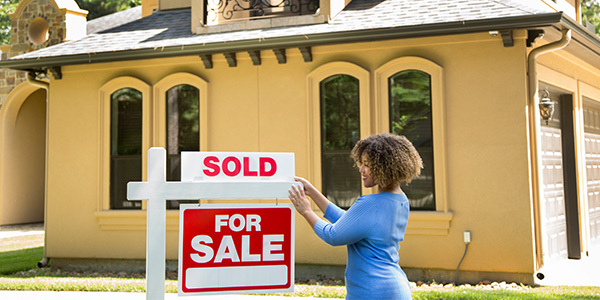Homeowners
Tips to Protect Your Home in Winter
February 23, 2016
Winter has officially arrived, and there is nothing better than curling up on the couch - a fire crackling before you and a mug full of hot chocolate in hand - as light, fluffy snow drifts down from the sky.
Cozying up with your family this winter should be a completely relaxing and stress-free experience, which is why it is of the utmost importance that you take the necessary precautions to safeguard your home from any winter-related maintenance issues. Taking preventive measures will ensure a happy, healthy season for you and your loved ones.
Protect Your Roof
A roof that is not properly insulated could lead to big problems in an area that experiences heavy snowfall. According to Realty Today, the snow that settles on your roof after a storm should melt at the same rate as the snow on the ground. If you notice it is melting faster, it means there is too much heat escaping through your roof. You need to add more insulation. It is also possible you need more insulation in only specific places on the roof. You will be able to tell if that is the case if there are certain areas of the roof where the snow is melting faster.
To add more insulation, Build Direct suggested placing batts (precut rock wool or fiberglass insulation) perpendicular to your rafters to cover gaps. It is never a bad idea to hire a professional to help you determine how much insulation must be added and exactly where it needs to go. You should also use caulk to seal any gaps left around plumbing vents or light fixtures.
Ice dams are another roof hazard to watch out for. Houzz explained that they form when the upper regions of a roof retain more heat than the edges because the higher regions have more insulation. As a result, the melted snow can build up behind blocks of ice that form around the eaves of the roof. All of this could cause leaks or long-term damage to the roof.
Gerry Dunleavy, owner of Winchester, Mass's Gerry Dunleavy Construction, told Houzz that removing any debris from your gutters before a snowfall will help prevent ice dams, as will making sure the insulation and ventilation are in tip-top shape. Have everything inspected if possible, and if you do spy evidence of a possible ice dam, make sure to remove the snow and ice safely.
Build Direct also warned homeowners to make sure too much snow does not pile up on their roofs. While a light layer of snow can provide some extra insulation, 6 inches or more could cause your roof to cave in. If your house is 2 or more stories, you must hire a professional to remove excess snow from your roof. Doing it yourself is unsafe. Those who own a 1-story home can remove snow with a snow rake. Just make sure you do not stand on the roof or a ladder while raking - both are safety hazards and could result in serious injury.
If snow does build up, Build Direct listed a few signs your roof might be caving in: large leaks, cracked walls, loud cracking noises, interior doors that stick or pop open, and ceiling joists that sag. If you see any of this happening in your own home, make sure everyone leaves the house immediately and dial 911.
Protect Your Pipes
Frozen pipes can lead to burst pipes, so it is vital to do everything you can to prevent your pipes from freezing in the winter. The Red Cross provided extensive tips for how to prevent frozen pipes. One thing you can do is remove outdoor hoses from their hose bibs and allow the water to drain out. Make sure to keep the hose detached and the outside valve open. You should also make sure any water supply lines in unheated places like the basement, attic or garage are well insulated and should drain any water in a sprinkler or swimming pool supply line. It can also be good to keep your faucets at a slow drip, especially in very cold weather.
Popular Mechanics said opening your cabinet doors will help stop the kitchen sink's plumbing from freezing. A kitchen sink's plumbing is often susceptible to freezing because the wall is not insulated. Opening the cabinet doors will help spread more heat throughout the kitchen.
If you leave your house for an extended period, do not turn the heat off. Make sure to keep your house heated to at least 55 degrees Fahrenheit at all times.
Protect Yourself From Fire and Carbon Monoxide Hazards
It is important to regularly check your smoke and carbon monoxide detectors. This is a time when our use of heat sources skyrockets, so Houzz recommended getting the detectors checked every month and making sure you have both carbon monoxide and smoke detectors in the kitchen, one on every floor, and in every bedroom. Castle & Cooke Mortgage, LLC also reminded homeowners to completely replace their detectors every seven years.
Before using your wood-burning fireplace, get it cleaned. The buildup of a hazardous, flammable residue called creosote is a huge fire hazard. Make sure to hire a reputable chimney sweeper to inspect and clean your fireplace every winter. Houzz also suggested getting your fireplace cleaned even if it is gas; it is still possible for debris to build up, and it is always better to be safe.
Seal All Gaps to Heat Loss
According to Castle & Cooke Mortgage, homeowners should inspect all areas of the home where air could seep in from outside (mostly windows and doors, but also cable openings and anywhere else you think might pose a risk) and use caulk and weather stripping to seal any leaks. Doing so will keep your heat from escaping your home and will help reduce the costs of your energy bill.





 Smart Moves Start Here.
Smart Moves Start Here.